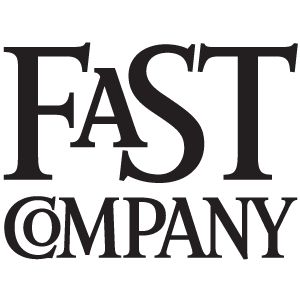This article by Jori Ford was originally published by Fast Company.
Black? Check. Korean? Female? Check, check. Lesbian? Check.
I’m what you’d call a quadruple threat when it comes to employers ticking off boxes for a diverse tech hire—a dream candidate for the modern recruiter charged with hiring members of underrepresented groups in a stubbornly white, male-dominated industry.
And to be honest, it’s the worst.
Don’t get me wrong, I applaud any company that decides it needs a talent pool more reflective of the world in we live in. And no, I’m not circulating my resume; I’m quite proud to be leading SEO and content efforts at G2 Crowd, a Chicago-based company that I know looks beyond tickboxes and sees me for the talent I bring to the table. But not all strategies for achieving a diverse and inclusive workforce are created equal, and at various points earlier in my career, I’ve been frustrated to realize that many recruiters don’t look beyond the sum of identifiers someone like me possesses.
Doing better is hard, and it can take time. But the goal is clear: To develop a process that treats each candidate as a human being who can’t be defined by any specific set of attributes. I don’t have all the answers, but my experiences in the tech world have given me a few ideas on where to start.
Diversity and inclusion initiatives based solely around filling quotas rarely achieve the intended business outcomes, and don’t well serve the employees brought in to fulfill them.
Diversity Starts With Values, Not Numbers
Companies interested in moving beyond checking boxes need to weave values and processes that foster diversity and inclusion throughout their cultures. The first step involves changing some simple things in the recruiting process:
1. Ditch the Quotas
You’re setting yourself up for failure if you’re merely working toward filling an equal employment opportunity quota. Those benchmarks do little more than minimize individuals’ value in the organization, and by chasing a goal like “raise proportion of women on the engineering team by 10 percent this year,” you risk embracing a mindset that makes it harder to see how every engineer—no matter who they are—is contributing to the team’s collective goals.
Yes, you’ll definitely want diverse teams; we already know that diverse organizations
simply perform better financially. But diversity and inclusion initiatives based solely around filling quotas rarely achieve the intended business outcomes, and don’t well serve the employees brought in to fulfill them.
2. Go Blind
Both of these tweaks can curb unconscious bias and other subjective assessments in the hiring process, which lowers the risk of making a purely (or mostly) tokenistic “diversity hire.” When given the opportunity to showcase their qualifications apart from identifiers, candidates can demonstrate their actual skills and abilities without worrying about being subject to bias or being implicitly typecast.
When given the opportunity to showcase their qualifications apart from identifiers, candidates can demonstrate their actual skills and abilities without worrying about being subject to bias or being implicitly typecast.
3. Consider Third-Party Resources
Whether it’s hiring consultants or specialized recruiting services, outside resources can offer a fresh set of eyes when thinking about workplace diversity. It’s hard to change what you can’t fully see, let along change it well (that’s how unconscious bias works, after all). The type of third-party support your organization might need depends on your unique set of goals and challenges, but most organizations can benefit from a fresh set of expert eyes on those issues.
These partnerships might lead to changes far beyond recruiting and hiring, from the company’s philanthropic efforts to rolling out anti-bias training programs or developing new talent pipelines with local universities. Whatever the outcome, these efforts usually help companies think more holistically about diversity and inclusion, rather than just seeing it as a hiring matter.
Having been hired and onboarded at an employer that’s adopted many of these values-based practices, I can honestly say that many of the frustrations I’ve felt in the past about being someone who “checks a lot of boxes” are gone. Instead, I’m confident that I was hired for my skills and embraced for the unique qualities I bring to the table. And that’s ultimately what makes me want to stay.
More from Fast Company:










